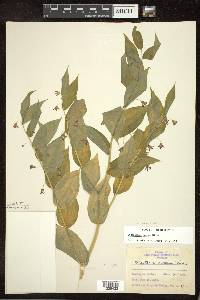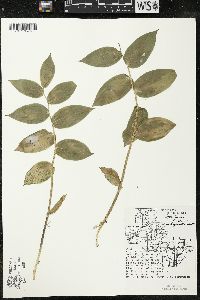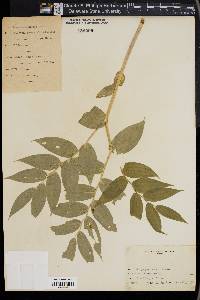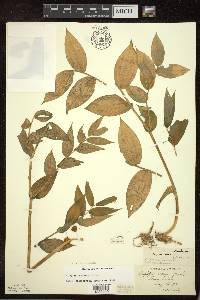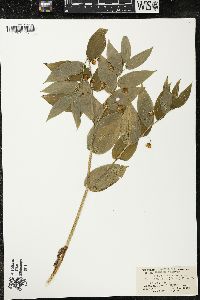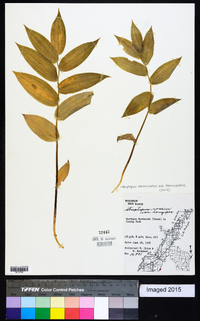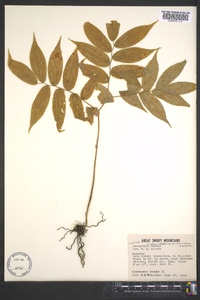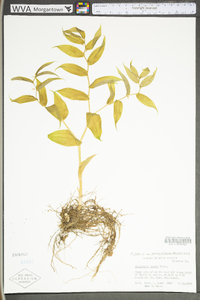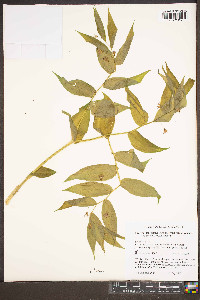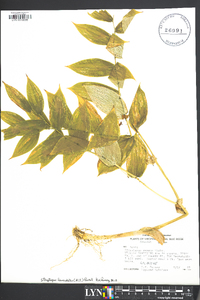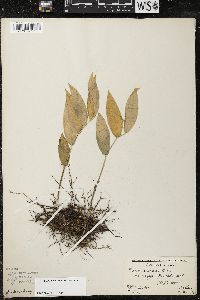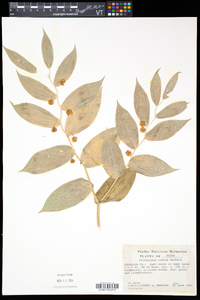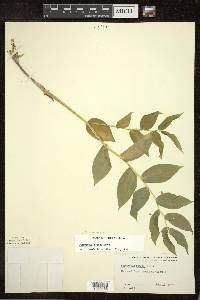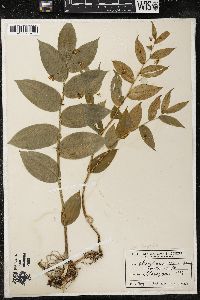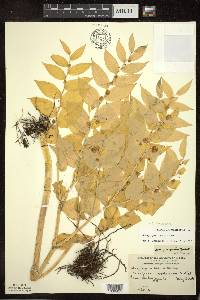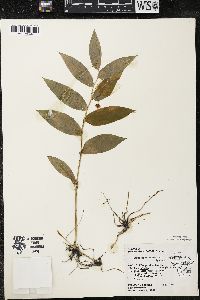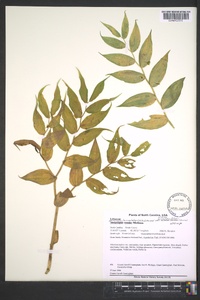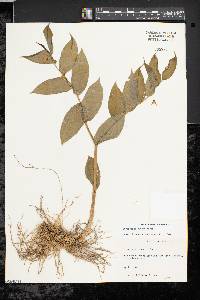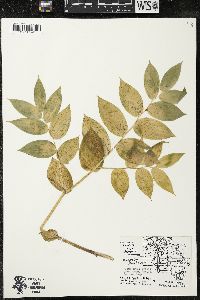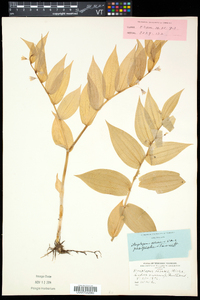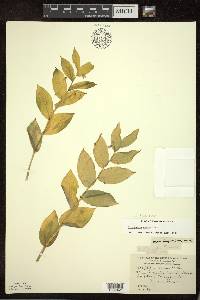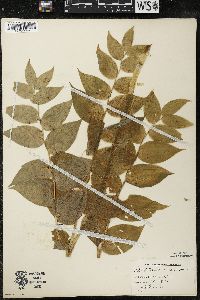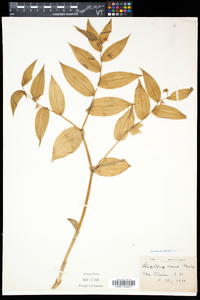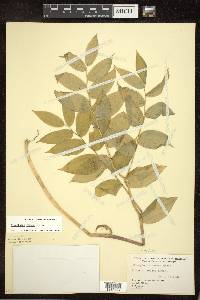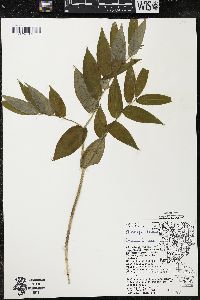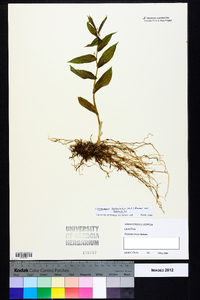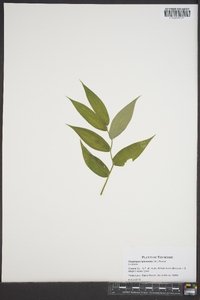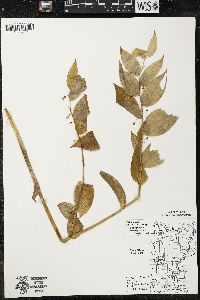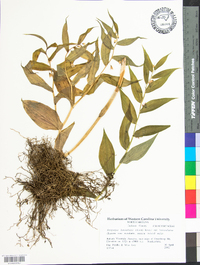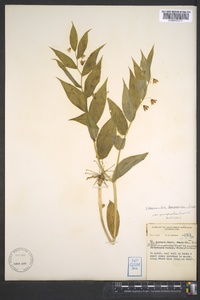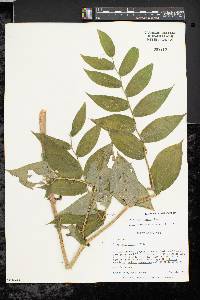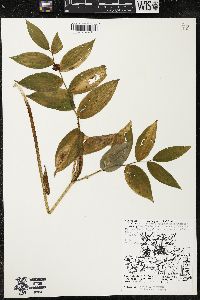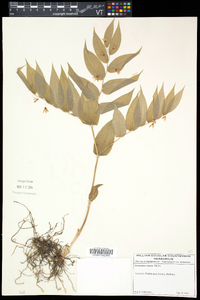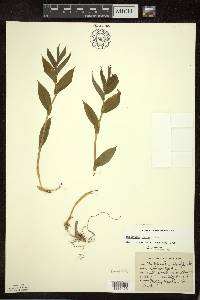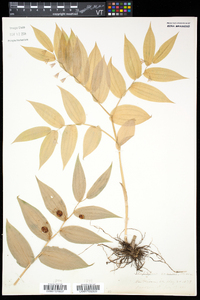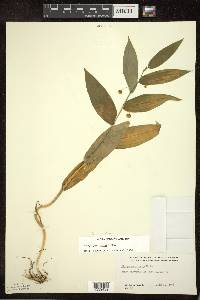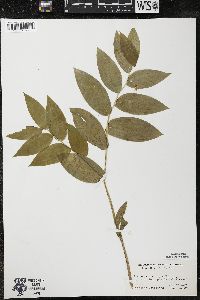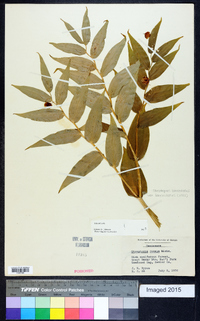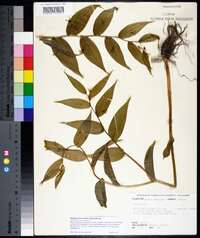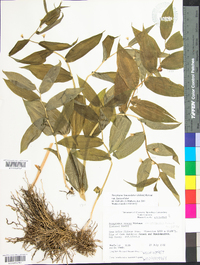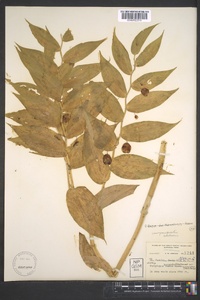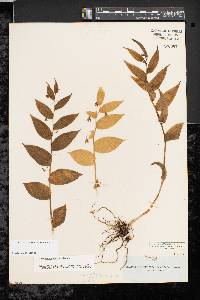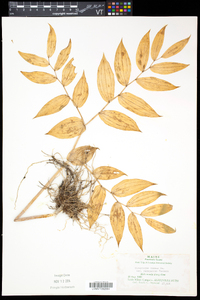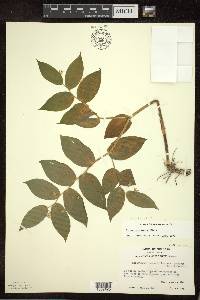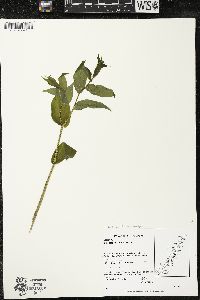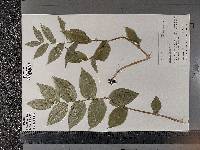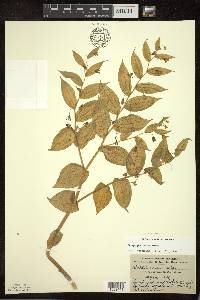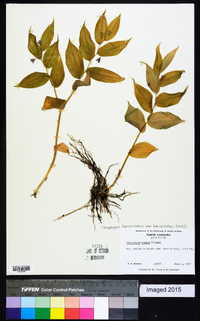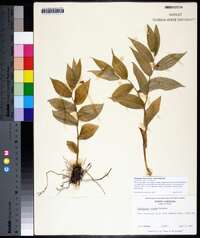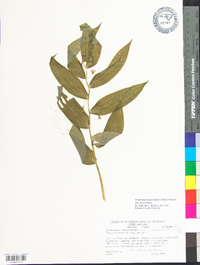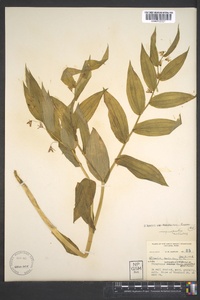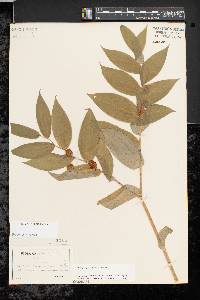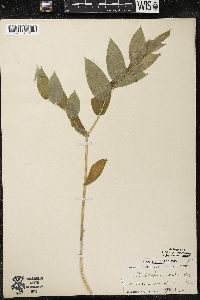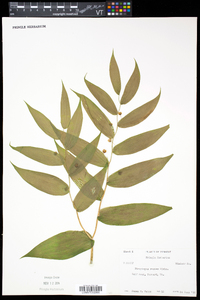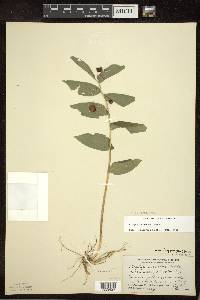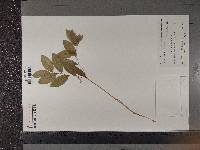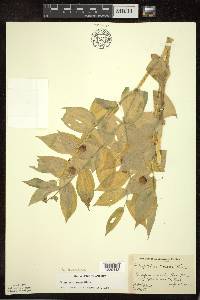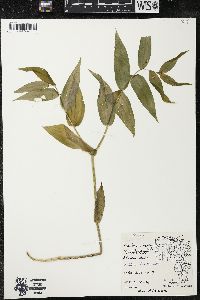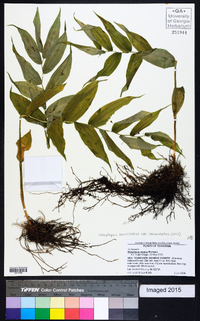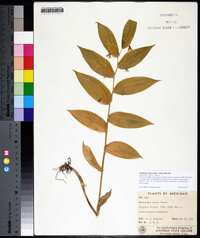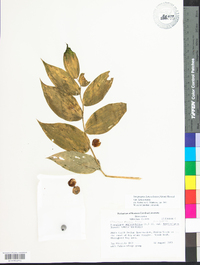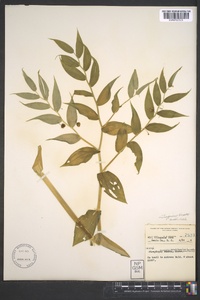Streptopus lanceolatus
|
|
|
|
Family: Liliaceae
Lance-Leaf Twistedstalk
[Streptopus longipes, moreStreptopus roseus f. giganteus Fassett, Streptopus roseus f. indivisus Lepage, Streptopus roseus f. simplex Vict.] |
Plants from slender, sometimes matted rhizomes with variable internode lengths. Stems simple or occasionally branched, 1.5-4(-8) dm, glabrous, nodes sparsely pubescent-fringed. Leaves 5-10 × 2-4.5 cm; blade ovate-elliptic, base rounded, margins finely glandular-pubescent, apex acute to acuminate; peduncle: junction with pedicel not abrupt, entire structure (5-)9-20 mm, glands absent or obscure. Flowers 1(-2) per axil; perianth campanulate; tepals slightly spreading but not recurved, white or greenish yellow, streaked or spotted with pale rose to reddish purple, narrowly oblong-lanceolate, 6-10 mm; stamens 5-8 mm; anthers 2 mm, apex 2-pointed; style slender, 3.5-4 mm; stigma weakly 3-lobed; combined peduncles and pedicels recurved, (5-)9-20 mm, glands absent or obscure; pedicel rarely geniculate at junction with peduncle, coarsely pubescent. Berries reddish purple to red, subglobose, 6-9 mm. Seeds 2.5-3 mm. 2n = 16, 48. Flowering late spring--mid summer. Rich moist coniferous and deciduous woods; 50--2000 m; St. Pierre and Miquelon; Alta., B.C., Man., N.B., Nfld. and Labr., N.S., Ont., P.E.I., Que.; Alaska, Conn., Iowa, Ky., Maine, Md., Mass., Mich., Minn., Mont., N.H., N.J., N.Y., N.C., Ohio, Oreg., Pa., R.I., Tenn., Vt., Va., Wash., W.Va., Wis. Streptopus lanceolatus has replaced the long-used name S. roseus, based on the recent lectotypification (J. L. Reveal 1993d) of Aiton´s Uvularia lanceolata. This widespread North American species has been divided into four intergrading varieties or races (N. C. Fassett 1935) based on variation in rhizome internode lengths and density of leaf-margin ciliation. These include var. roseus in the southern Appalachians, var. longipes in the western Great Lakes region, var. lanceolatus (= var. perspectus Fassett) in the northeast, and var. curvipes in the west.
Stem simple or in larger plants branched, 3-8 dm, sparsely and finely hairy, especially at the nodes; lvs lanceolate or lance-ovate, acuminate, broadly rounded at the sessile base, finely ciliate, the main ones 5-9 נ2-3.5 cm; peduncle and pedicel combined 1-3 cm, jointed at or below the middle, always 1-fld; tep pink with darker red streaks, 1 cm, spreading only near the tip; anthers each double-pointed; lobes of the style nearly 1 mm; fr red, subglobose, 1 cm; 2n=16. Rich woods; Lab. and Nf. to n. Minn., s. to N.J., Pa., and s. Mich., and in the mts. to N.C.; also in the Pacific states and w. Can. May-July. (S. roseus) Three ill-defined vars. in our range: Var. roseus (Michx.) Reveal, of the s. Appalachians, from Pa. to N.C., has wholly glabrous pedicels; the other 2 vars. have ±ciliate pedicels. Var. lanceolatus, widespread in our range, but more common eastward, has short, matted rhizomes. Var. longipes (Fernald) Reveal, chiefly midwestern, has elongate rhizomes. Gleason, Henry A. & Cronquist, Arthur J. 1991. Manual of vascular plants of northeastern United States and adjacent Canada. lxxv + 910 pp. ©The New York Botanical Garden. All rights reserved. Used by permission. |

